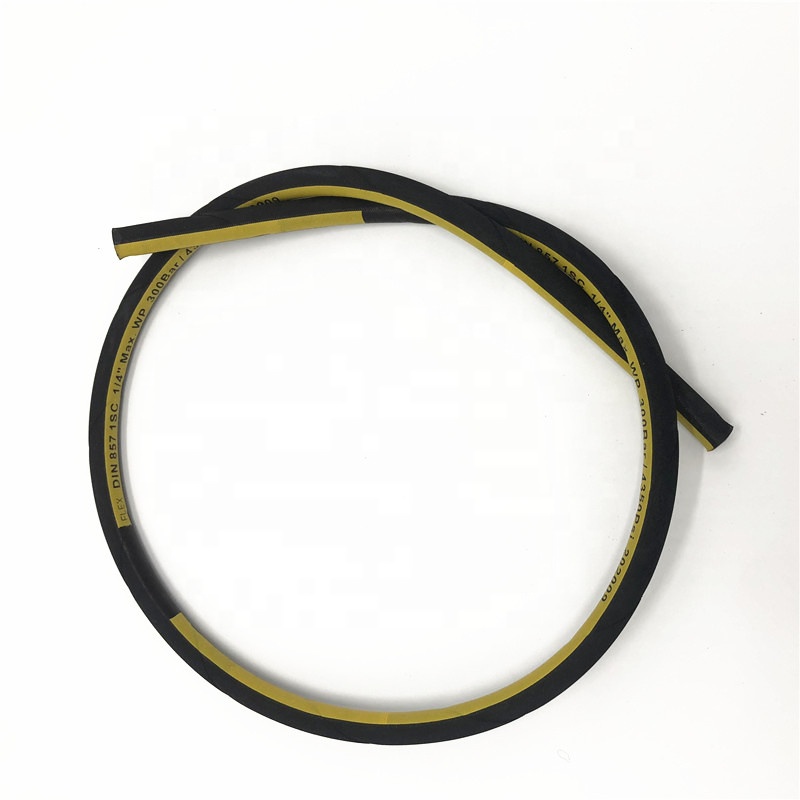335345435
Sep . 10, 2024 02:34 Back to list
High Temperature Hydraulic Hose | Durable and Reliable Solutions
High Temperature Hydraulic Hoses Essential Components for Industrial Applications
When it comes to fluid power systems, hydraulic hoses play a vital role in ensuring the efficient and reliable transfer of fluids under pressure. Among the various types of hydraulic hoses, high-temperature hydraulic hoses are particularly significant due to their ability to withstand elevated temperatures and extreme conditions. This article explores the properties, applications, and selection criteria for high-temperature hydraulic hoses.
Properties of High-Temperature Hydraulic Hoses
High-temperature hydraulic hoses are designed to operate in environments where temperatures can exceed standard limits. Typically, these hoses can handle temperatures ranging from 150°C (302°F) to over 200°C (392°F), making them suitable for applications in various sectors, including manufacturing, construction, and automotive industries.
The construction of high-temperature hydraulic hoses usually involves advanced materials that can resist thermal degradation and maintain flexibility and pressure ratings at elevated temperatures. Common materials include synthetic rubber, thermoplastic, and fiberglass-reinforced compounds. These materials not only provide excellent durability but also ensure that the hose retains its performance over time, even when subjected to high thermal stress.
Applications
High-temperature hydraulic hoses find applications in numerous industries, primarily where heat is a significant factor. Some common applications include
1. Automotive In the automotive industry, these hoses are used in hydraulic systems for brakes, power steering, and transmissions. They can withstand the high temperatures generated by engine operations and ensure optimal performance and safety.
2. Manufacturing Industrial machinery often operates at high temperatures due to friction and mechanical processes. High-temperature hydraulic hoses are employed in these machines to transfer hydraulic fluids efficiently without compromising safety or performance.
3. Oil and Gas The oil and gas sector frequently requires high-temperature hydraulic hoses for drilling operations, where extreme conditions prevail. These hoses are crucial for maintaining the integrity of hydraulic systems during exploration and production.
high temperature hydraulic hose

4. Construction Equipment Heavy machinery such as excavators and bulldozers operates under tough conditions involving high heat. High-temperature hydraulic hoses are essential for ensuring the reliable operation of hydraulic systems that power these machines.
Selection Criteria
When selecting high-temperature hydraulic hoses, several criteria must be considered
- Temperature Rating Ensure that the hose meets the specific temperature requirements of your application. Look for hoses with a rating that exceeds the maximum temperature to provide a safety margin.
- Pressure Rating Choose hoses that can handle the pressure levels required for your hydraulic system. This is vital for preventing hose failure and ensuring system reliability.
- Compatibility Ensure that the hose material is compatible with the fluids being transported to prevent chemical degradation.
- Flexibility and Bend Radius High-temperature hoses should maintain flexibility even at elevated temperatures. It's essential to consider the minimum bend radius to avoid kinking and damaging the hose.
- Certification Standards Look for hoses that meet industry standards and certifications, which can provide assurance of quality and performance.
Conclusion
High-temperature hydraulic hoses are indispensable in various industrial applications where fluids are transported under high pressure and temperature. By understanding their properties, applications, and the factors to consider when selecting them, businesses can ensure the efficiency and safety of their hydraulic systems. Investing in quality high-temperature hydraulic hoses is crucial for maintaining operational reliability and prolonging the life of equipment.
-
SAE 100 R17 Black Smooth Cover Hydraulic Hose
NewsMar.07,2025
-
SAE 100 R17 Black Smooth Cover Hydraulic Hose
NewsMar.07,2025
-
SAE 100 R17 Black Smooth Cover Hydraulic Hose
NewsMar.07,2025
-
SAE 100 R17 Black Smooth Cover Hydraulic Hose
NewsMar.07,2025
-
SAE 100 R17 Black Smooth Cover Hydraulic Hose
NewsMar.07,2025
-
steel wire braided hydraulic hose
NewsMar.07,2025



